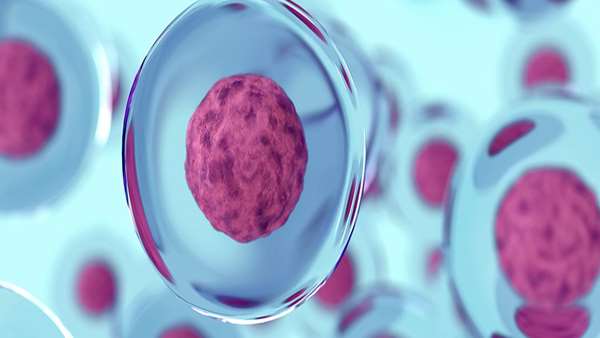Scientists Have Built Synthetic Cells That React to External Cues, Just Like Real Ones
Researchers have developed artificial cells that can respond to external chemical forces, just like real ones do. This exciting step could get us closer to using synthetic biological structures in real-world situations, such as targeted drug delivery or cleaning up pollution.
Researchers have developed artificial cells that can respond to external chemical forces, just like real ones do. This exciting step could get us closer to using synthetic biological structures in real-world situations, such as targeted drug delivery or cleaning up pollution.
In this proof-of-principle study, scientists have succeeded in getting artificial cells to glow with fluorescence when they detect calcium in their surroundings.
It"s a "basic skill" for biological cells that use calcium signalling to communicate, but a vitally important step for us, if we are to develop artificial cells we can program and manipulate.
"These systems could be developed for use across biotechnology," says chemical biologist James Hindley, from Imperial College London in the UK.
"For example, we could envisage creating artificial cells that can sense cancer markers and synthesise a drug within the body, or artificial cells that can sense dangerous heavy metals in the environment and release selective sponges to clean them up."
To create the desired reaction, Hindley and his colleagues built a cell made up of smaller compartments called vesicles. At the cell edge is a lipid membrane containing pores that allow calcium to enter, and the calcium ions then activate enzymes inside the vesicles, producing the fluorescing effect.
While this doesn"t fully match the complex biochemical interactions we see in nature, it does show off the potential of artificial cells and the ways they can be constructed to serve a certain purpose – maybe even one that natural cells can"t cover.
"Biology has evolved to be robust by using complex metabolic and regulatory networks," says Hindley. "This can make editing cells difficult, as many existing chemical response pathways are extremely complicated to copy or engineer."
"Instead, we created a truncated version of a pathway found in nature, using artificial cells and elements from different natural systems to make a shorter, more efficient pathway that produces the same results."
Simplifying the cell pathway has other benefits besides making these cells easier to work with – it means a lot of the more messy aspects of nature, including by-products that might be toxic to the cell"s health, don"t have to be factored in.
By picking and choosing the right elements from nature – the enzyme in their artificial cell activated by calcium is from bee venom, for example – the researchers say they"re able to produce something new that just wouldn"t be possible when editing existing cells.
It"s an exciting time for the field: earlier this year we saw scientists develop artificial cells able to make their own energy through photosynthesis, using a specially constructed membrane. That might eventually lead to cells that can sustain themselves.
We"ve also seen artificial cells that are smart enough to trick real cells into thinking they"re genuine, something that will be essential if scientists are going to be able to develop systems where artificial cells and natural cells work together in harmony.
According to the team, the simplified "plug-and-play" system that scientists have outlined in this early research can be adapted for other purposes and with other aims in mind.
"The plug-and-play aspect of our system means researchers can take elements from across nature to create new chemical pathways designed with specific aims in mind," says chemical biologist Oscar Ces, from Imperial College London.
"Our template system is also easy to set up and can be used to quickly test any new combination of elements researchers come up with."
The research is due to appear in PNAS.
Reference:https://www.pnas.org/content/116/34/16711





ارسال به دوستان